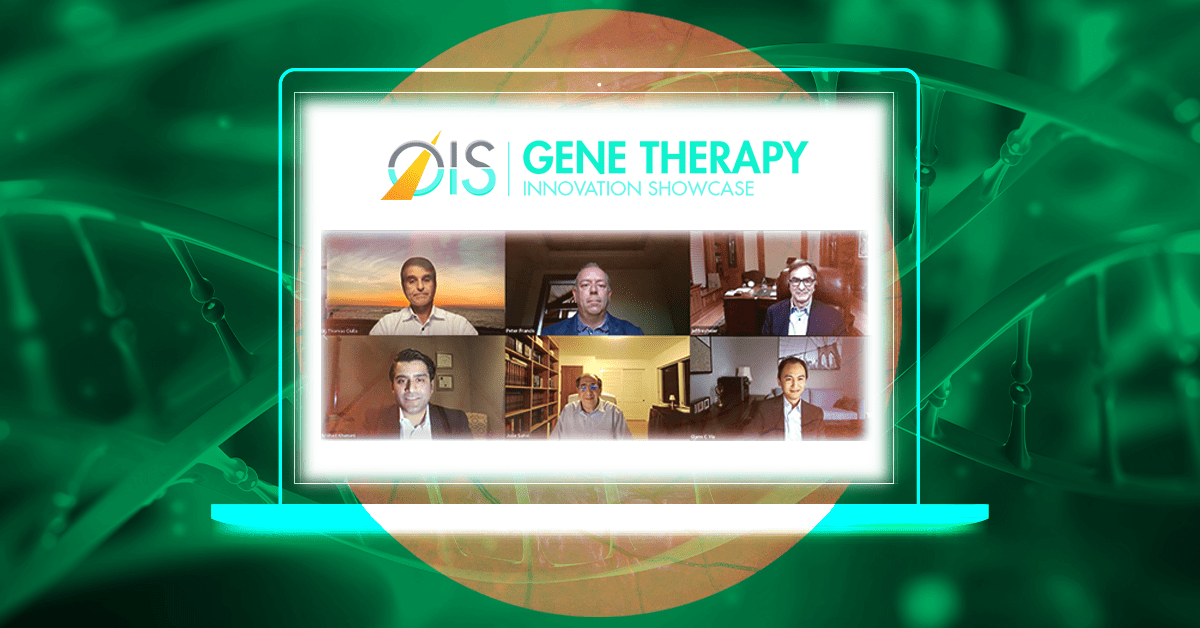Ocular Gene Therapy Takes Next Step Beyond Inherited Retinal Disease

Ten years from now, gene therapy for ocular disease will have made the shift from exclusively targeting inherited retinal diseases with very small populations, such as retinitis pigmentosa and Leber hereditary optic neuropathy, to acquired and degenerative disorders with much larger numbers, namely age-related macular degeneration and diabetes-related disease.
That’s the consensus of a host of well-known retina researchers who participated on the “Gene Therapy Outlook Panel” at last week’s OIS Gene Therapy Innovation Showcase. Videos of the panel and Showcase presentations are available here.
The future ocular gene therapy landscape will include regulatory-approved treatments for AMD, diabetic retinopathy, and diabetic macular edema, more efficacious but less invasive delivery platforms, and more precise treatment targets, the panelists stated.
The Eye’s ‘Tremendous Attraction’
“Gene therapy has gone through the same kind of process that we’ve seen across medicine where there are some initial successes, and then the field struggles to really make it main line,” said Peter Francis, MD, PhD, CSO and therapeutic head, ophthalmology/retina at 4D Molecular Therapeutics. “Then those technological issues are overcome and we see multiple therapies growing out from this, and I think we can look forward to that in ocular and retinal gene therapy.”
Part of the reason for that is because the ocular space holds a “tremendous attraction” for pharmaceutical companies. “From a manufacturing and a commercial perspective, there are small-volume, small manufacturing hurdles to be overcome in contrast to, for example, intravenous gene therapy approaches,” he said. “I think we’re going to see continued interest. We’re likely to see multiple additional approvals.”
Proving that gene therapy would be beneficial for complex diseases such as dry, or non-neovascular, AMD would, be “transformative” in retina, Dr. Francis said. “I think in the next 10 years that’s probably going to be the most exciting area for retinal gene therapy,” he added.
Promising Clinical Trials
Clinical trials are already showing promise, noted Jeffrey S. Heier, MD, director of the retina service and retina research at Ophthalmic Consultants of Boston. He pointed to two such trials: the Phase I/IIa trial of RGX-314 (REGENXBIO) in which patients in the high-dose cohort responded to therapy; and the OPTIC Phase I trial of ADVM-022 (Adverum Biotechnologies) which demonstrated durability of treatment out to 92 weeks. RGX-314 is an adeno-associated virus (AAV) vector containing a transgene for anti-VEGF antigen-binding fragment. ADVM-022 is an AAV vector of the protein aflibercept.
“There’s a very good chance that we’re going see treatments for wet AMD, and subsequently DME and perhaps DR and RVO [retinal vein occlusion] that allow us to treat significant portions of patients,” Dr. Heier said.
“The natural progression will be to dry AMD,” he said, adding that treatments for this form of the disease are close.
A Faster Schedule
Arshad Khanani, MD, is more optimistic about the schedule for approved gene therapy for complex retinal disease. “Based on the efficacy and durability we are seeing currently and a manageable safety profile of these different programs, I think even before 10 years we may have an FDA-approved treatment for wet AMD and likely DME and DR,” said Dr. Khanani, who’s director of clinical research at Sierra Eye Associates in Reno, NV, and a clinical associate professor at the University of Nevada.
“DR is really exciting because it’s a lifetime disease in patients who tend to be younger,” he said. “If we can have a delivery approach that is easy, and we have good efficacy and manageable safety of an approach, it’s going to be really exciting.”
Early studies of gene therapy reported ocular inflammation resulting from the surgical approaches for placing gene vectors in the eye, but Dr. Khanani noted that more recent reports, specifically those from the Adverum program that found no severe inflammation or vasculitis, were more promising. “If we can learn how to manage these patients well then I think it is going to be a clear win for patients and really game-changing for our field where we can really help preserve vision long-term,” he said.
“It’s very exciting to think that we can have a gene therapy function as sustained release for some of these large, multifactorial disorders,” said panel moderator Thomas Ciulla, MD, MBA, a volunteer professor at the University of Indiana School of Medicine, Indianapolis, retina specialist at Midwest Eye Institute and chief medical officer at Clearside Biomedical.
In the First Inning
A “gene-independent approach” to treatment would play a significant role in advancing gene therapy for complex retinal diseases, said Jose-Alain Sahel, MD, chair and director of ophthalmology at the University of Pittsburgh School of Medicine. A gene-independent approach works by overexpressing upstream regulatory genes for nuclear hormone receptors in retinal cells instead of attempting to correct mutations in individual genes.
“It would be more complex but also more personalized in terms of stage of the disease and the specific need of this individual patient,” Dr. Sahel said.
Despite these advances, gene therapy for complex retinal diseases has a way to go, said Glenn Yiu, MD, PhD, associate professor at University of California Davis Health in Sacramento. CRISPR gene editing, in which a cell’s genome can be edited at a precise location to yield a more targeted therapy, would play a significant role, he said.
“We’re in the first inning,” Dr. Yiu said. “We’re going to go for precision. With things like CRISPR you only need to make one edit and you don’t need it to be expressed forever. So the idea of something you could turn on and off; something you can target to specific cells as opposed to every cell possible. Those are all areas of research that will be making this more interesting in the next 10 years.”
